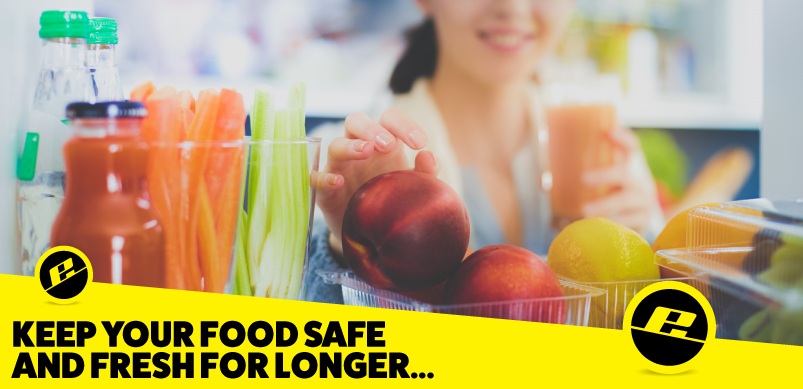
How to organise your fridge to keep your food fresh
May 5, 2023 | Foodie Tips | Fridge Tips | No comments
When it comes to organising goods and items in your home, whether it’s the clothes in your wardrobe or the tools in your garage, it’s easy to lose track of your set-up fast. The same goes for our fridges.
It’s all too common to start the week with a fresh food shop and a nicely organised fridge, only to see it gradually devolve into a mismanaged mess by the end. However, this is not only unsightly but can also mean bad news for the food itself. So, here’s a little refresher course on the best ways to store your food, along with some helpful tips on its longevity too.
What food goes where?

First and foremost, it’s important to know the best places to store different items of food inside your fridge. Storing food correctly will ensure it stays fresh and safe to eat for as long as possible, so here’s a quick refresher course!
- Top shelf: This is where you should store ready-to-eat foods (sandwiches, pre-made snacks). This will keep them safe from other dripping foods and potential cross-contamination.
- Middle shelf: Dairy products (milk, eggs, cheese) belong here, as this is where the temperature is most consistent. This will help products like milk last longer, so remember: no milk cartons in the door!
- Bottom shelf: Always store meat here! This will stop it from dripping down onto other foods, preventing cross-contamination and potential food poisoning.
- Drawers: These are ideal for fruit and veg, as the drawers will keep them safe from dripping and cross-contamination. Plus, the drawers are the coolest place in your fridge and best for humidity control, so this is where fruit and veg will be best preserved!
- Doors: The best place to store condiments, juices and other drinks. This is because the doors fluctuate in temperature more than any other area in your fridge when opened, so it’s best to store items here that are less likely to go off!
Extra tips for an organised fridge
Of course, there’s more to keeping your fridge in order than making sure things are stored in the right places. Here are some extra tips and bits of advice to help keep your food safer and fresher!
Time to purge!
Get your detective hat on and go through every item inside. Check the dates, see how long items have been in there, and chuck away anything that’s past its best. General rule: if you can’t remember how long it’s been in there, chuck it out!
Labels, labels, labels
Try to label everything in your fridge. If it’s leftovers, mark the date so you know how long you can keep it. If you’re using containers, remember expiry dates so you don’t keep things for too long, taking up space or causing unwanted smells!
Smaller is better
Food packaging is often larger than it needs to be and takes up valuable space. Reduce this by taking food out of its packet once opened and placing it in a smaller container. This will help free up more space inside your appliance.

Accessorise!
There are plenty of accessories to help you keep your fridge spacious and hygienic. Bottle racks for storage, moisture absorbing mats to prolong freshness, deodorisers to stop odours… you can find these and more in our range of fridge freezer spares and accessories!
List it or lose it
Always check your fridge before shopping and write down what you need. That way, you’ll avoid overbuying and limit the amount of food you throw away. To make it quicker, you could even just take a photo of the inside of your fridge before shopping.
Sensible storing
Foods such as bread, onions and garlic don’t need to be put in the fridge. If you’re struggling for space, make sure you know which things should or shouldn’t go in the fridge. To get you started, Good Housekeeping has a list of 10 things you shouldn’t store in the fridge.
Hopefully, with this guide, your fridge will be more organised than ever, and your food will stay safe and fresh for longer! For more handy fridge tips, check out these 10 ways your fridge can help you with household chores.
Tags: Foodie Tips, Fridge, Fridge Tips

